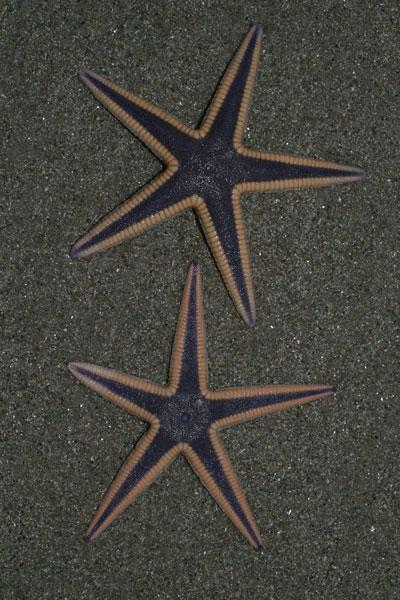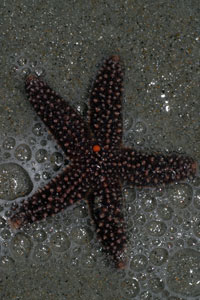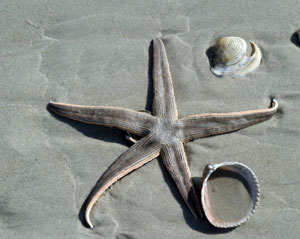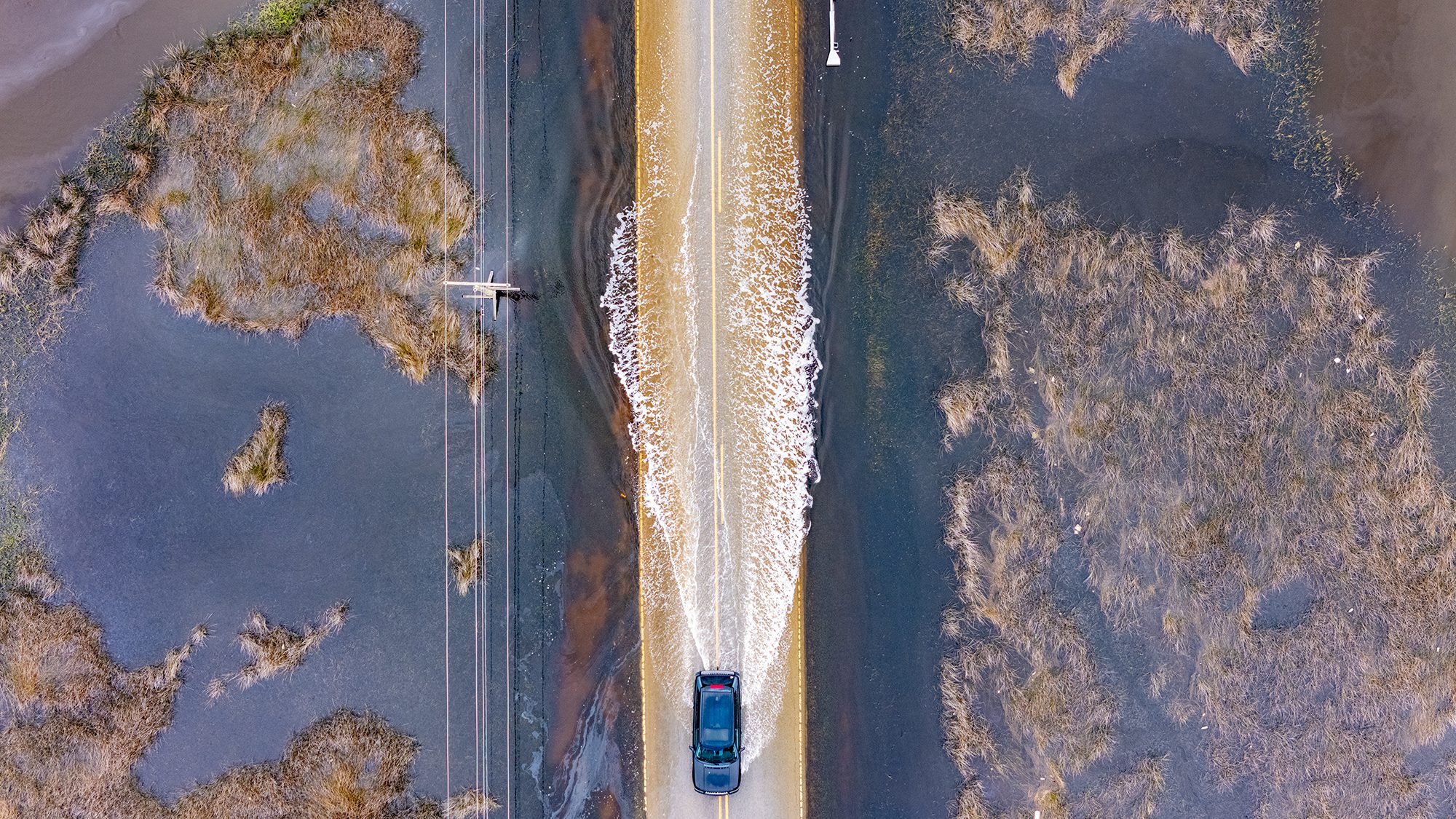I have observed many serious beachcombers strolling along the high tide line in what I call the “sea shell shuffle” in search of oceanic prizes cast upon the sandy shores by the spilling waves. In a zombie-like trance, beachcombers appear inebriated as they slowly shuffle in a zig zag pattern with their head downward and upper body swaying from side to side. Then suddenly, sobriety returns as their shelling radar locks in on a target causing them to swiftly walk in a bee line to the object. A squeal of pleasure is often heard over the crashing waves as the item is examined, especially if a starfish is the object of attention.
 Many stuffy marine biologists would scoff at the term “starfish” since this animal is not a fish at all. The scientifically correct prefer “sea star.” By whatever name, the animal is a type of invertebrate, similar to sand dollars and sea urchins, that are known as echinoderms. Many echinoderms have a rough, tough spiny outer layer that provides protection from predators. The term echinoderm is actually Greek for “hedgehog skin”.
Many stuffy marine biologists would scoff at the term “starfish” since this animal is not a fish at all. The scientifically correct prefer “sea star.” By whatever name, the animal is a type of invertebrate, similar to sand dollars and sea urchins, that are known as echinoderms. Many echinoderms have a rough, tough spiny outer layer that provides protection from predators. The term echinoderm is actually Greek for “hedgehog skin”. Sea stars can also breathe through tiny structures called papillae that are on the surface of the skin. If these breathing structures become obstructed with seaweed or other debris, the common sea star uses small pincer-like organs, called pedicellaria, to pluck off any undesired objects.
Sea stars can also breathe through tiny structures called papillae that are on the surface of the skin. If these breathing structures become obstructed with seaweed or other debris, the common sea star uses small pincer-like organs, called pedicellaria, to pluck off any undesired objects. As more carbon dioxide is pumped into the atmosphere, more ends up in our oceans. Even though these calcifying organisms rely on the carbon in the ocean, too much carbon dioxide makes the ocean more acidic. Research suggests that increased acidity could impact the ability of sea stars and other echinoderms to produce calcium carbonate and eventually reduce their role as a carbon sink. It’s important that we have these natural carbon sponges that help reduce the amount of carbon dioxide in our atmosphere.
As more carbon dioxide is pumped into the atmosphere, more ends up in our oceans. Even though these calcifying organisms rely on the carbon in the ocean, too much carbon dioxide makes the ocean more acidic. Research suggests that increased acidity could impact the ability of sea stars and other echinoderms to produce calcium carbonate and eventually reduce their role as a carbon sink. It’s important that we have these natural carbon sponges that help reduce the amount of carbon dioxide in our atmosphere.




